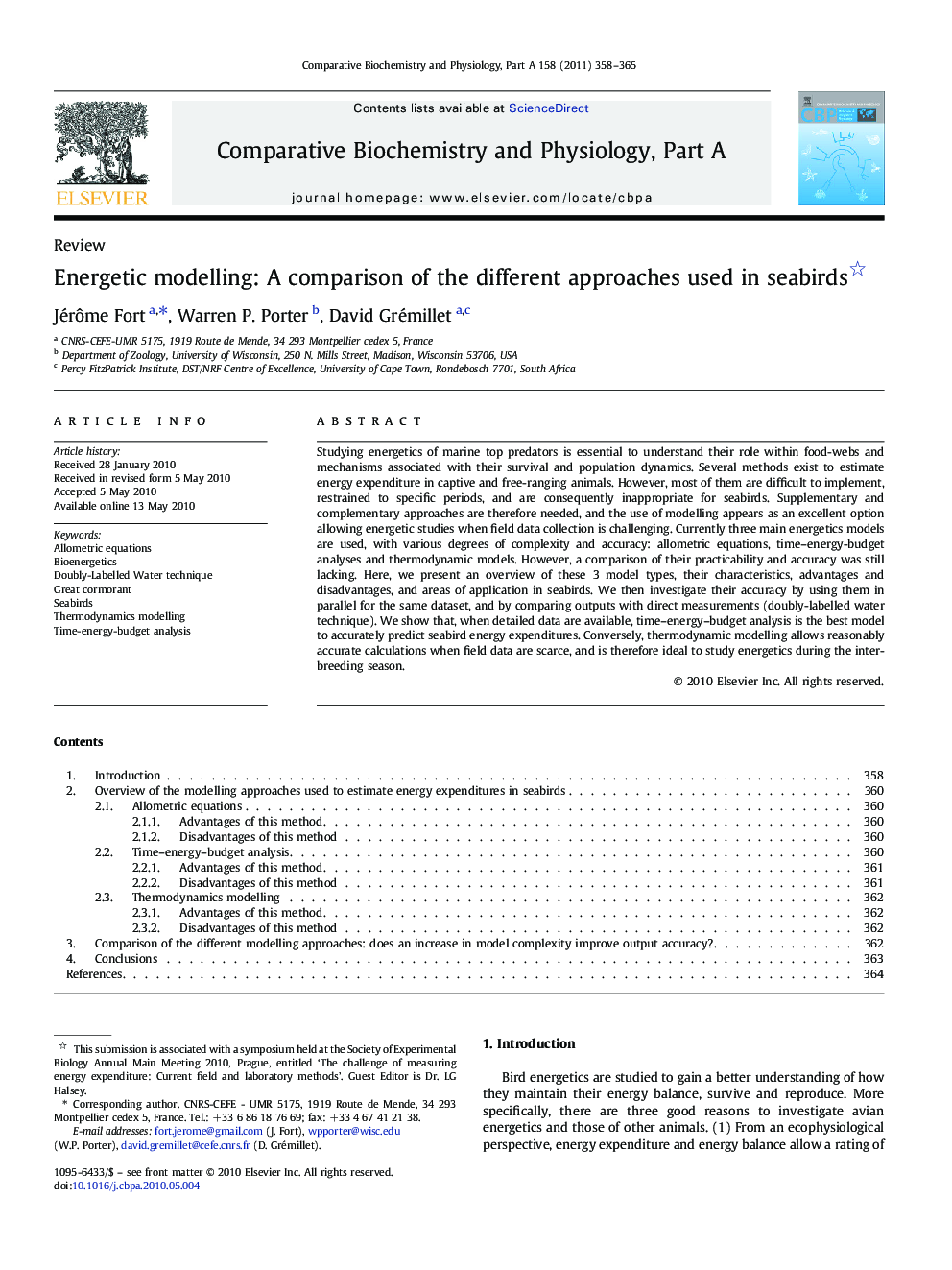| Article ID | Journal | Published Year | Pages | File Type |
|---|---|---|---|---|
| 1972812 | Comparative Biochemistry and Physiology Part A: Molecular & Integrative Physiology | 2011 | 8 Pages |
Studying energetics of marine top predators is essential to understand their role within food-webs and mechanisms associated with their survival and population dynamics. Several methods exist to estimate energy expenditure in captive and free-ranging animals. However, most of them are difficult to implement, restrained to specific periods, and are consequently inappropriate for seabirds. Supplementary and complementary approaches are therefore needed, and the use of modelling appears as an excellent option allowing energetic studies when field data collection is challenging. Currently three main energetics models are used, with various degrees of complexity and accuracy: allometric equations, time–energy-budget analyses and thermodynamic models. However, a comparison of their practicability and accuracy was still lacking. Here, we present an overview of these 3 model types, their characteristics, advantages and disadvantages, and areas of application in seabirds. We then investigate their accuracy by using them in parallel for the same dataset, and by comparing outputs with direct measurements (doubly-labelled water technique). We show that, when detailed data are available, time–energy–budget analysis is the best model to accurately predict seabird energy expenditures. Conversely, thermodynamic modelling allows reasonably accurate calculations when field data are scarce, and is therefore ideal to study energetics during the inter-breeding season.
